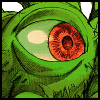Zelda and Mythology: Dragons
Posted on September 27 2013 by Axle D. Wilder
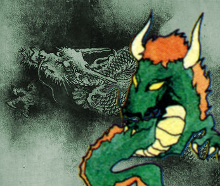 This one was inevitable; I mean, what are dragons if not the single most well-known and popular mythical creature around? They show up all the time in modern fantasy stories and ancient myths alike, appearing in the beliefs and myths of many cultures worldwide. It seems everyone’s into large winged lizards with a little feline grace. Zelda, too, has an abundance of dragons, and more importantly their presence is rather obvious and not obscured like a lot of mythological elements in the series I’ve discussed. Their likeness and name alone have appeared quite often, from dungeons like the Dragon labyrinth in the original game and the Dancing Dragon Dungeon from Oracle of Seasons, to enemies who resemble them like the Ra from Adventure of Link. The term “dragon” can be traced back to words in Greek and Latin that denoted any large serpent, not just the creatures we now know as dragons.
This one was inevitable; I mean, what are dragons if not the single most well-known and popular mythical creature around? They show up all the time in modern fantasy stories and ancient myths alike, appearing in the beliefs and myths of many cultures worldwide. It seems everyone’s into large winged lizards with a little feline grace. Zelda, too, has an abundance of dragons, and more importantly their presence is rather obvious and not obscured like a lot of mythological elements in the series I’ve discussed. Their likeness and name alone have appeared quite often, from dungeons like the Dragon labyrinth in the original game and the Dancing Dragon Dungeon from Oracle of Seasons, to enemies who resemble them like the Ra from Adventure of Link. The term “dragon” can be traced back to words in Greek and Latin that denoted any large serpent, not just the creatures we now know as dragons.
What’s important to note is that there are two main variations of dragons: European and Chinese. The European dragons are the quadruped, bat-winged, spiky varieties most people are used to. European dragons were almost always evil until their appearances in modern fantasy, and of course were known for wreaking havoc, hording treasure, and making their home in caves. The Chinese dragon, on the other hand, is benevolent and even royal, used as a symbol by the emperor as they represent power, strength and good luck.
Valoo from The Wind Waker, then, represents the popular interpretation in modern fantasy: The biology of a European dragon combined with the disposition and significance of the Chinese sort. Valoo is an ancient, benevolent, and wise deity of the Rito tribe and their patron god. In the myth, a Chinese dragon has 117 scales, 81 of which are yang, or light, while the other 36 are yin, or darkness, as related to the Chinese philosophy of Yin and Yang. In The Wind Waker, though, dragon scales just… grant people wings. Or in Skyward Sword… the ability to swim. The Dragon Scale in Spirit Tracks is just a treasure that can be traded for Rupees or Train Parts. At the very least Zelda games preserve the importance of a dragon’s scales if not their actual purpose or qualities from the myth. An even bigger connection Valoo shares with his Chinese kin is an association with pearls; in The Wind Waker, Valoo is one of three deities which possess the Goddess Pearls, whereas Chinese dragons are often depicted with flaming pearls, as pearls are associated with wealth, good luck, and prosperity.
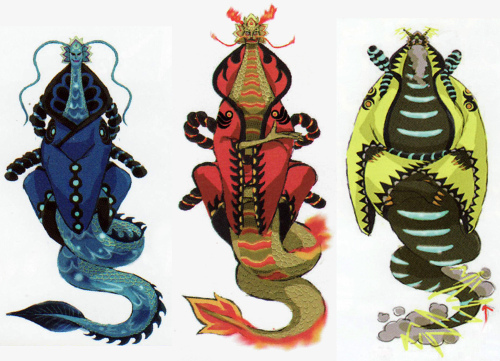
These benevolent Chinese dragons were pretty accurately depicted in Skyward Sword: The three Dragons are all extremely accurate depictions of the Chinese dragon, even being dressed in Eastern garb to drive the point home. Though they have many humanoid features, they all have heavy reptilian and serpentine influences, so they definitely look the part — though Eldin the most so as he possesses the long whiskers that the Chinese dragon is often depicted with. Even more importantly, however, are their elemental affiliations; Chinese dragons, more so than fire, are associated with water and storms. The fire-associated Eldin is actually the odd one out in this case — though there are fire-associated varieties of Chinese dragon, like the Fucanglong which guards buried treasures and creates volcanos; a perfect fit for Eldin — while both Faron the Water Dragon and Lanayru the Thunder Dragon exemplify the more traditional Chinese dragon elements quite well. The Shenlong is a bringer of storms, while the Feilong dwells in the clouds, both like Lanayru, and there are MANY water-themed dragons to compare to Faron: Dilong, Yinglong, Jiaolong, and Panlong, to name a few. It should be noted that the Bhutanese Druk is another Eastern thunder dragon that bears similarity to Lanayru. The Chinese dragons in general were also celestial or heavenly, none more than the Tianlong, and so status of the Dragons in Skyward Sword as servants of the Goddess Hylia is perfectly fitting.
There’s no shortage of accurate depictions of European dragons, either!
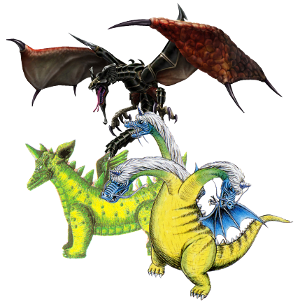 It started in the first game with the very traditional-looking evil dungeon boss dragons Aquamentus and Gleeok, both having the familiar appearance of a European dragon. Gleeok has appeared many more times in the series, but they’ve all served the same purpose. Its original multi-headed depiction (three-headed in the artwork) is that of the Russian Zmey Gorynych: Green and with three heads. Though its appearance in Phantom Hourglass strongly resembles the Chinese dragon without having its demeanor. Argorok from Twilight Princess was a perfect representation of a European dragon, and even General Onox’s final “Dark Dragon” form in Oracle of Seasons was spot-on as he was an evil man-dragon attempting to cause senseless destruction.
It started in the first game with the very traditional-looking evil dungeon boss dragons Aquamentus and Gleeok, both having the familiar appearance of a European dragon. Gleeok has appeared many more times in the series, but they’ve all served the same purpose. Its original multi-headed depiction (three-headed in the artwork) is that of the Russian Zmey Gorynych: Green and with three heads. Though its appearance in Phantom Hourglass strongly resembles the Chinese dragon without having its demeanor. Argorok from Twilight Princess was a perfect representation of a European dragon, and even General Onox’s final “Dark Dragon” form in Oracle of Seasons was spot-on as he was an evil man-dragon attempting to cause senseless destruction.
The most interesting evil dragon in the series is actually the most frequently recurring one aside from Gleeok, and certainly the most popular: Volvagia. Volvagia appeared first in Adventure of Link under the poorly translated name Barba, then again in Ocarina of Time. Volvagia is a perfect reversal of Valoo: A dragon of the Chinese sort’s biology but the European sort’s demeanor. Volvagia is a monstrous and destructive beast, a man-eater that threatens to torch Hyrule, just like the evil marauding dragons of medieval Europe’s myth. Though Volvagia mostly behaves like a European dragon, it should be noted that there are Chinese varieties that are similar: The Chilong is a demon dragon that dwells in the mountains like Volvagia, while the Bashe is a python-like elephant-eater that resembles Volvagia with his diet of Gorons. Though it should be noted that the Chilong is hornless while Volvagia is not. Fascinatingly, Hyrule Historia claims that Valoo is a descendant of Volvagia, so it would seem that an evil beast that otherwise physically resembles a Chinese dragon evolved into a benevolent creature that looks like a European dragon. Extremely ironic!
The more obscure Zelda titles have dragons too. They serve as the generic bosses and villains of Game & Watch Zelda, and a dragon-like beast called Dora Dora serves as a boss in Freshly Picked Tingle’s Rosey Rupeeland while one called Warbane is a boss in Zelda’s Adventure on CD-i. Not much to say about these, as all of them have the demeanor of a European dragon, though it’s interesting to note that Warbane used to be a benevolent one before getting corrupted by Gannon (this is how his name is spelled in Zelda’s Adventure; don’t blame me!). Like Valoo, Warbane seems to be essentially modern fantasy’s version of a dragon; a combination of both regions’ varieties. It’s interesting that a Celestial Sign is given upon defeating Warbane, bringing to mind the celestial qualities of the Chinese dragons he used to behave like, but this isn’t very significant since all of the bosses in Zelda’s Adventure give these.
While not a dragon in Zelda, the Seahorses in Majora’s Mask, like their real-life counterparts, share an affiliation with them in Chinese folklore, where seahorses are believed to be a type of sea dragon.
One final thing I’d like to talk about. I must confess… I have been holding out on you! Oh, true, I’ve described the more well-known versions of dragons in both European and Chinese tradition. But before the appearance of dragons were normalized (and even occasionally afterwards)… they were sort of just whatever the hell.
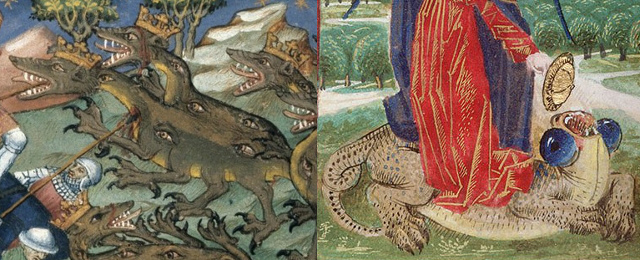 Pictured: Dragons
Pictured: DragonsOriginally they were just serpents like their namesake, and later were given more lizard-like features, but in numerous depictions they were also shown to be more like the Greek Chimera. Hardly the noble dragons of Chinese myth, and sometimes not even as well put-together as the European sort, these proto-dragons were amalgamations of serpents and other creatures and were basically little more than pestilent abominations. Even the benevolent Chinese dragons have been described with these more hodgepodge appearances, sometimes said to have traits of all 11 of the other animals of the Zodiac.
What I am getting at here essentially, is that there really aren’t — or at least weren’t — any rules for how a dragon should look. Vaguely reptilian or serpentine seems to be the one running trait, but even that was deviated from in some paintings of dragons. Essentially all a dragon is… is a horrible beast that causes death and destruction. Bonus points if it’s a snake!
Do you realize what this means? It means that Zelda has a lot more “dragons” than we ever realized. What does Zelda have if not a huge abundance of evil monsters with strange appearances that cause destruction and guard treasure in their lairs? In Zelda we even have a special term for it: Dungeon boss.
Maybe that’s an exaggeration, but at the very least it cannot be denied that, dragon or not, every single dungeon boss in the series at least performs the role of the European dragon. The dungeon is their lair, and the quest item within is their treasure. Zelda plays off the classic fable of the hero saving the princess, and the dungeon bosses are, one way or the other, the dragons Link battles along the way.
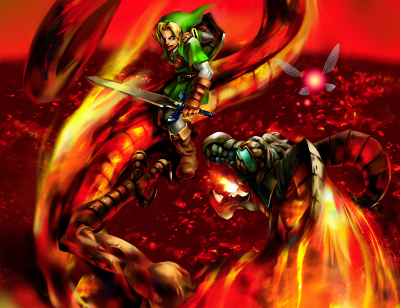
As I said, dragons are the most well-known mythical beast and so this abundance of dragons in the Zelda series makes a whole lot of sense. It’s interesting how both types are well-represented, although perhaps that’s only natural as Zelda is a series developed in the East with a world resembling the medieval West. One thing I’ve always wondered about was if all these dragons in Zelda were intended to be related? Volvagia and Valoo are, but what relation do they share with the Dragons of Skyward Sword, if any? Are the other dragon-like beasts that aren’t identified by that name related? Probably no relation between all of these beasts is intended or at least fleshed out, but it’s an interesting thought. We can be sure this isn’t the last we’ve seen of dragons in the series; we’ve seen many before, and we will see many again!




